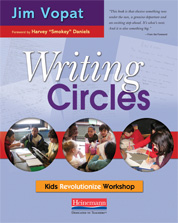Here is an excerpt of her post:
Students can “fake” read with reading logs or without. To me, the logs just encourage that. A strong reader will read with or without the logs. Typically they will resent having to fill them out – or their parents will. The student who does not enjoy reading is not going to magically become a reader because they need to fill out a grid detailing what they read the previous night. More work? No thanks.
The question that begs to be asked, then, is how will you know they read if you don’t use reading logs. Conferences. By conferring with my students I know if they are reading or if they aren’t. Do some kids still try and fake it? You bet. Can you catch them? Absolutely. But really, it isn’t about “catching” them – or, it shouldn’t be. What conditions can be put in place to make kids want to read? That’s the question I’m interested in. Because I can confer, book talk, and fill the room with books all I want, but until the students decided they want to join our reading community, it won’t work.
Engagement. I’m fascinated by it. Each year I watch kids and wonder –what made them decide to do the work? Why do some kids “check-in” in my class, but not in another?

